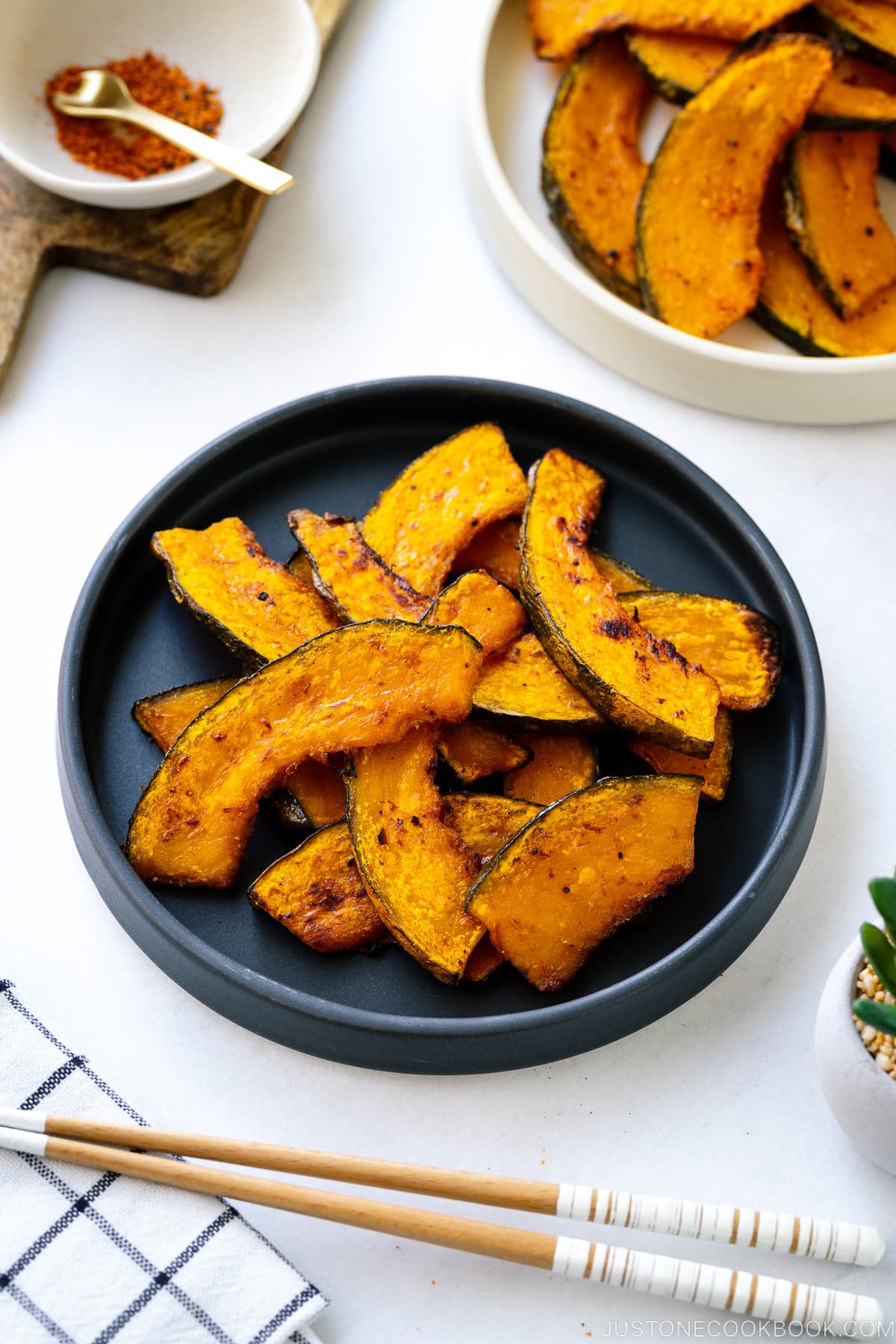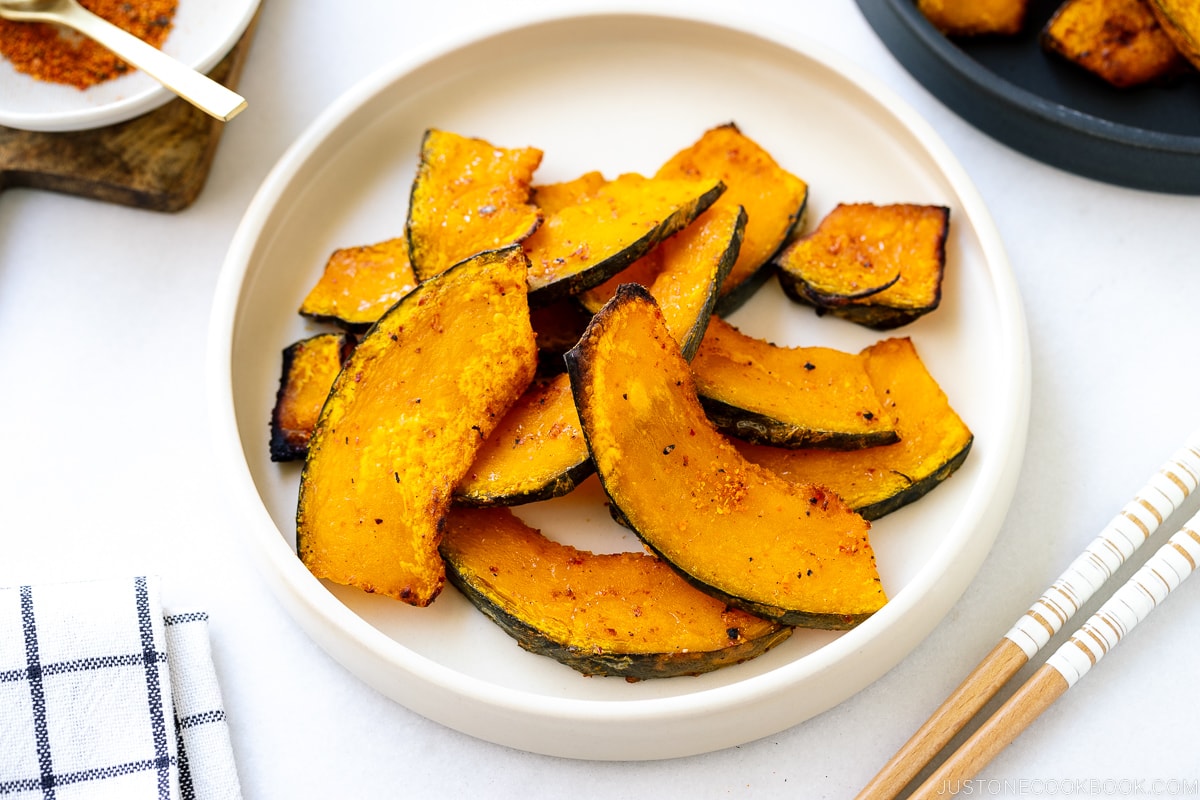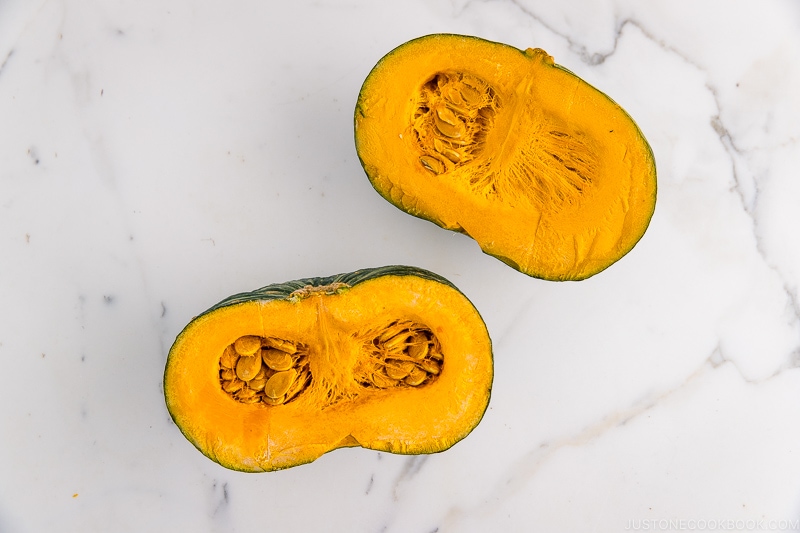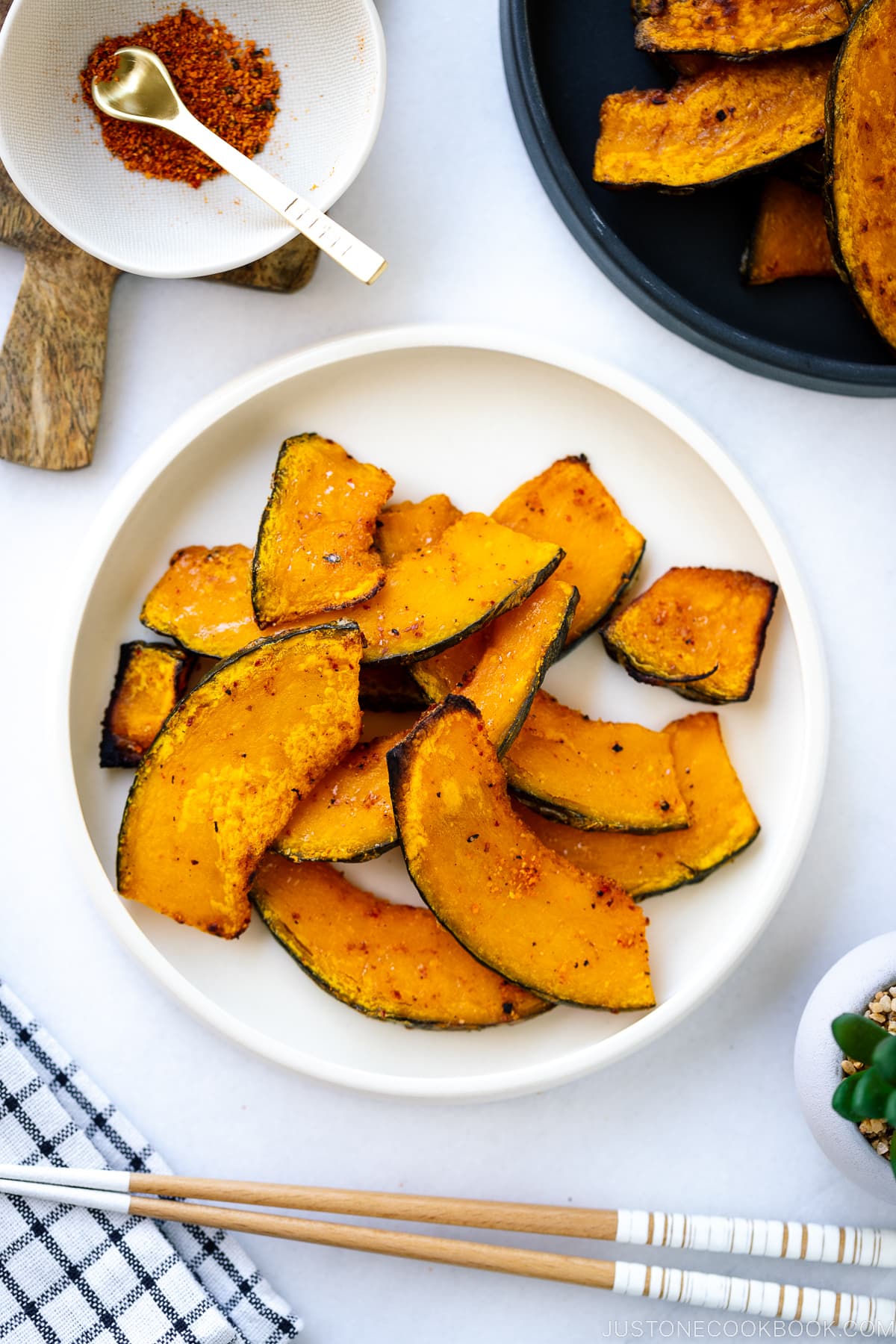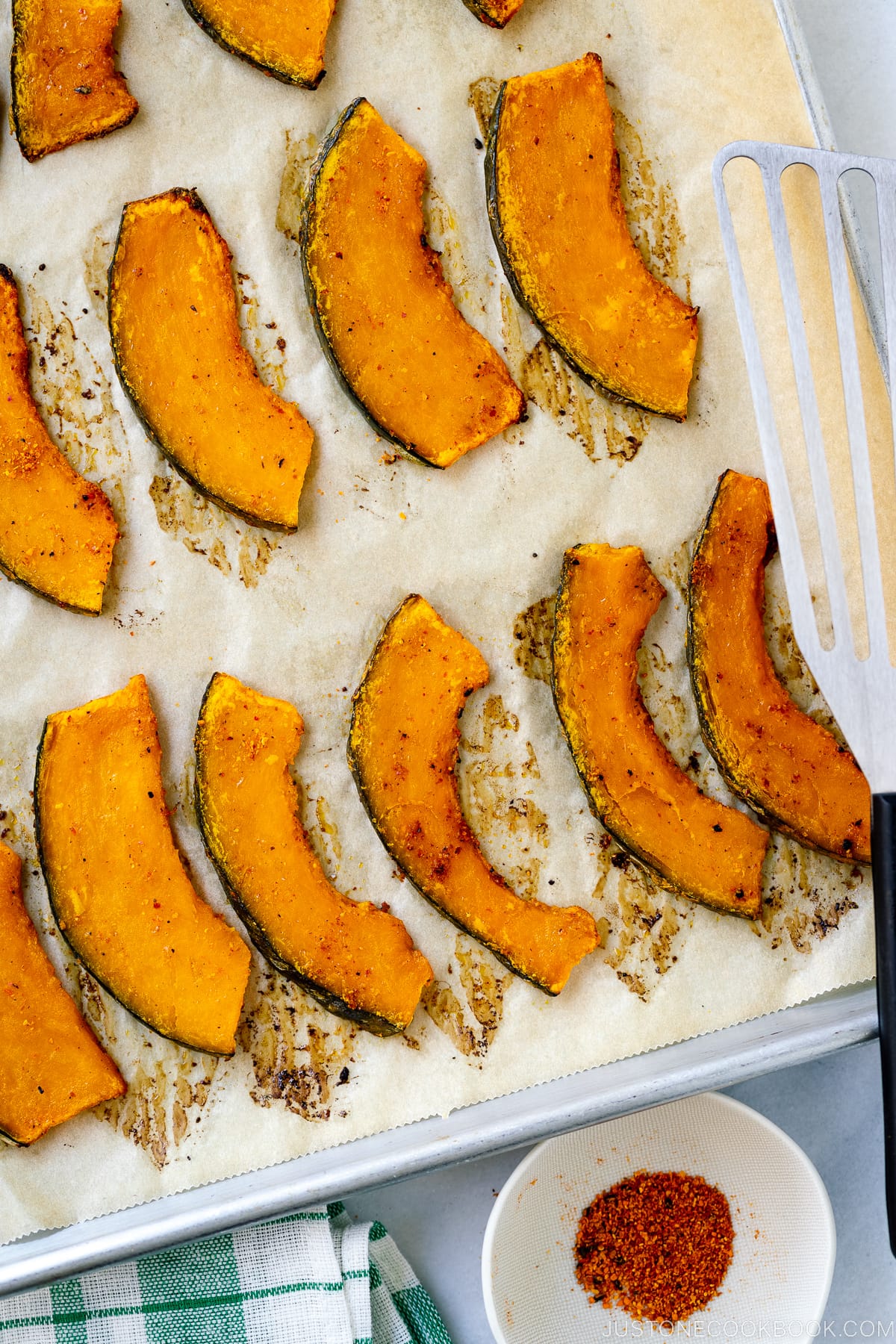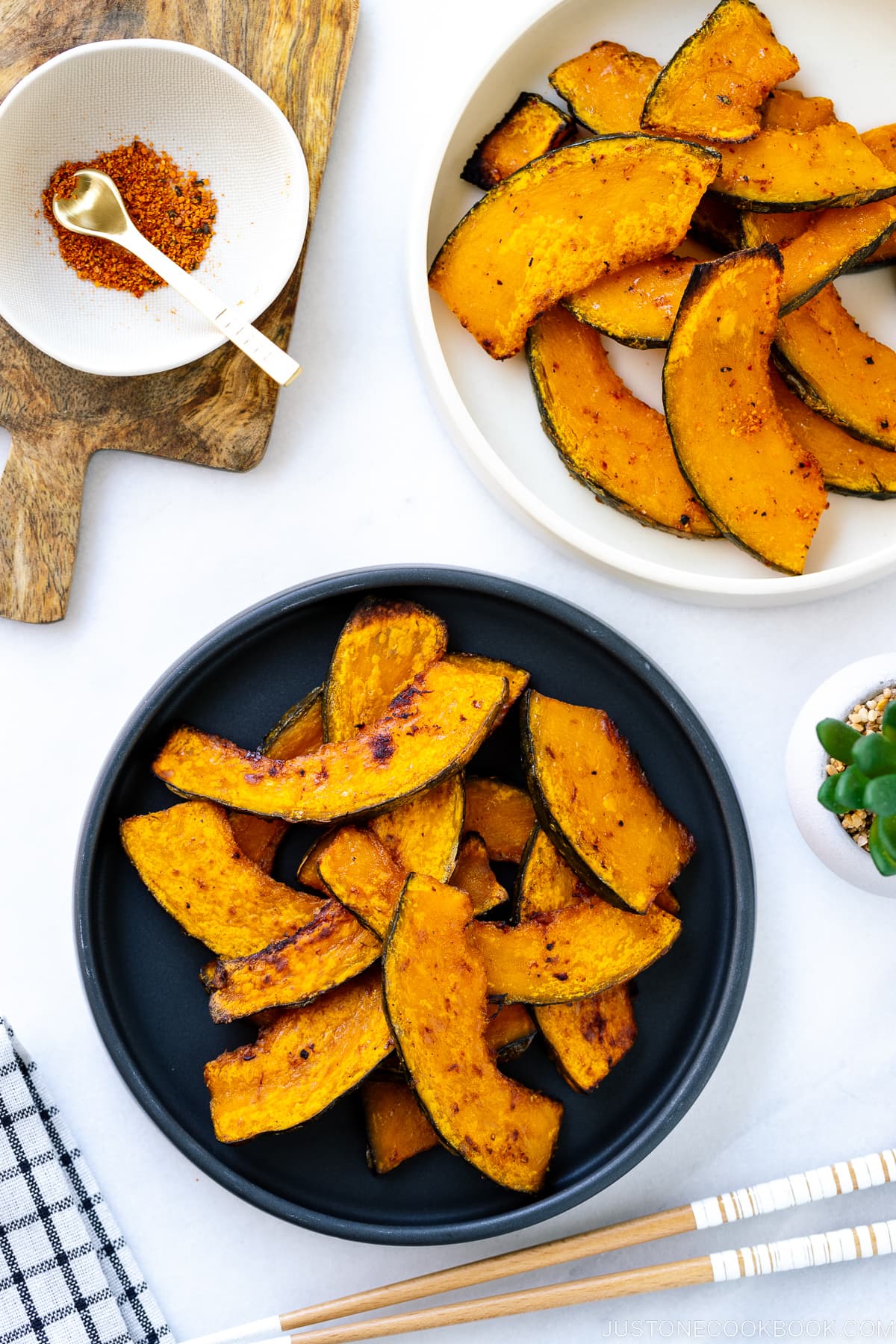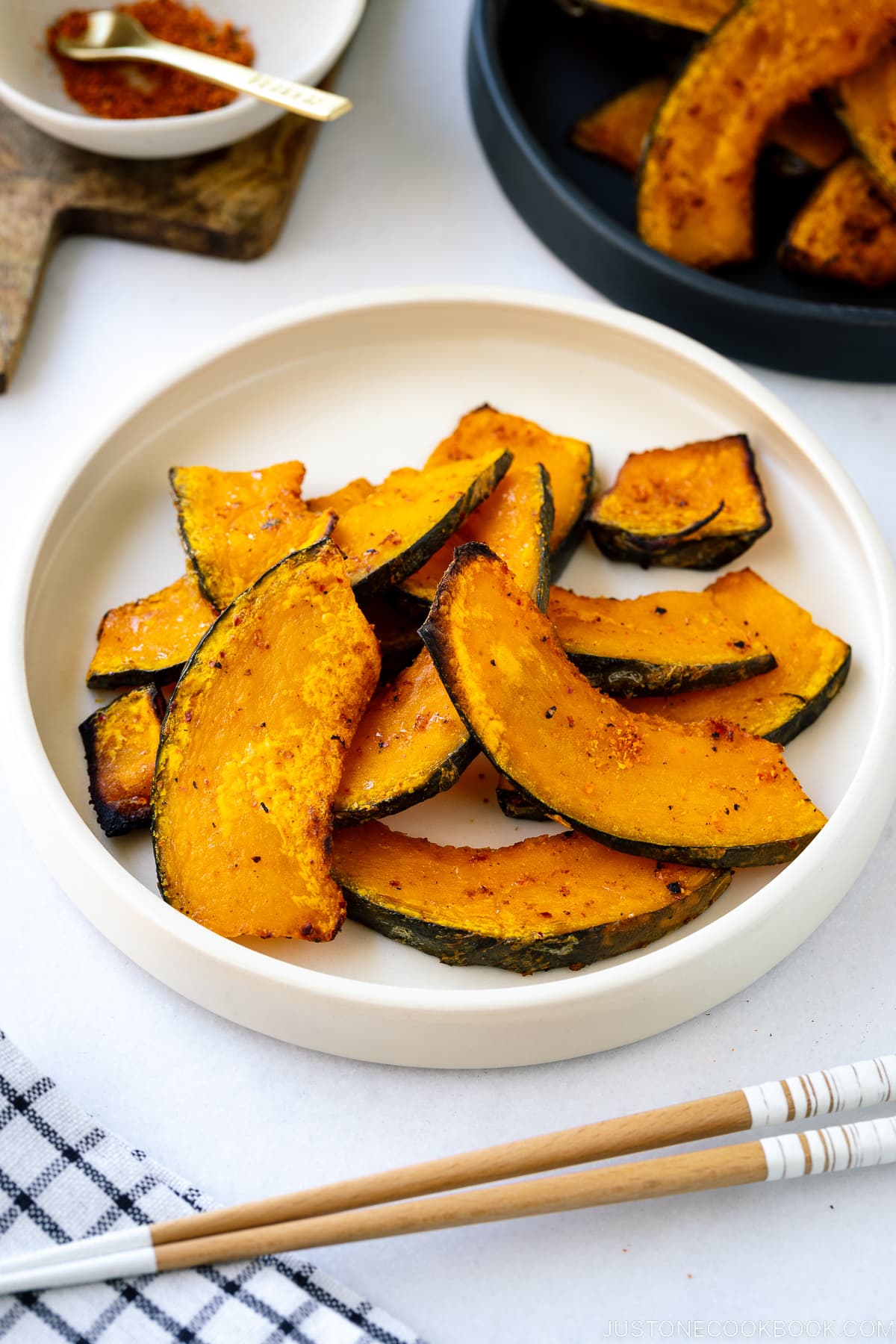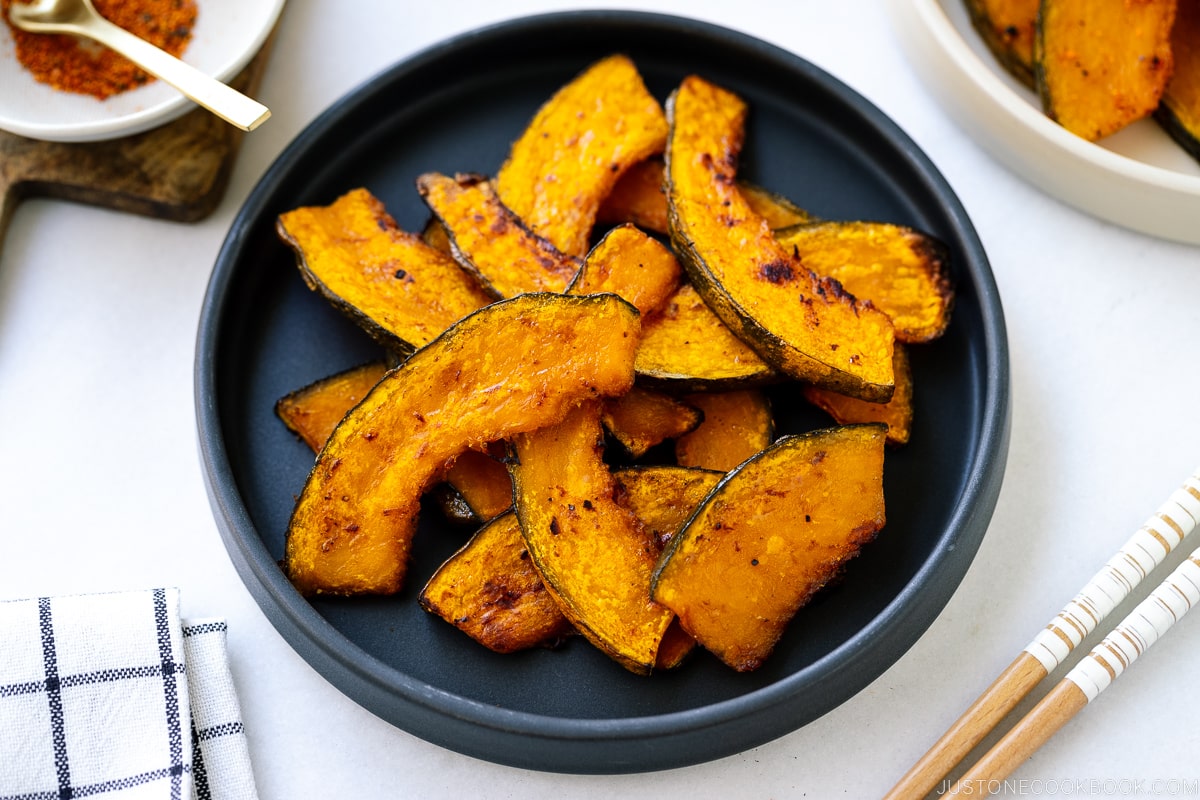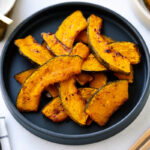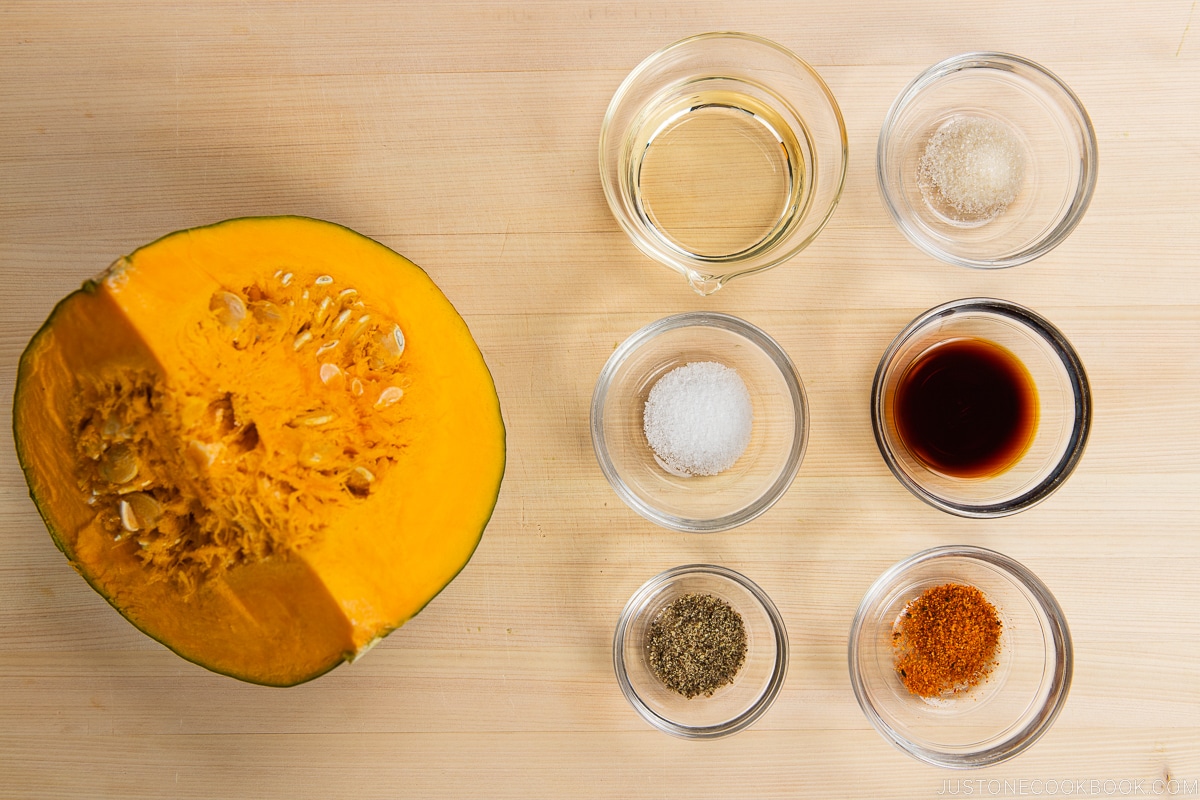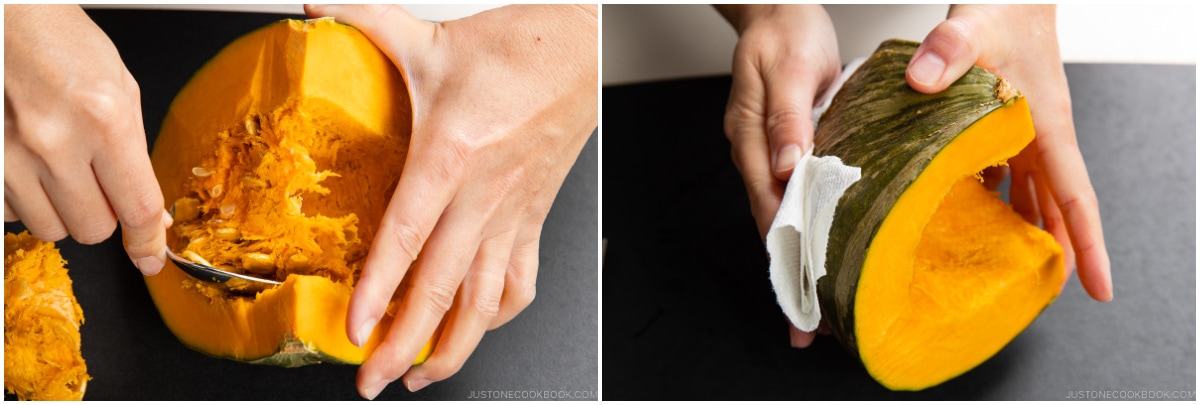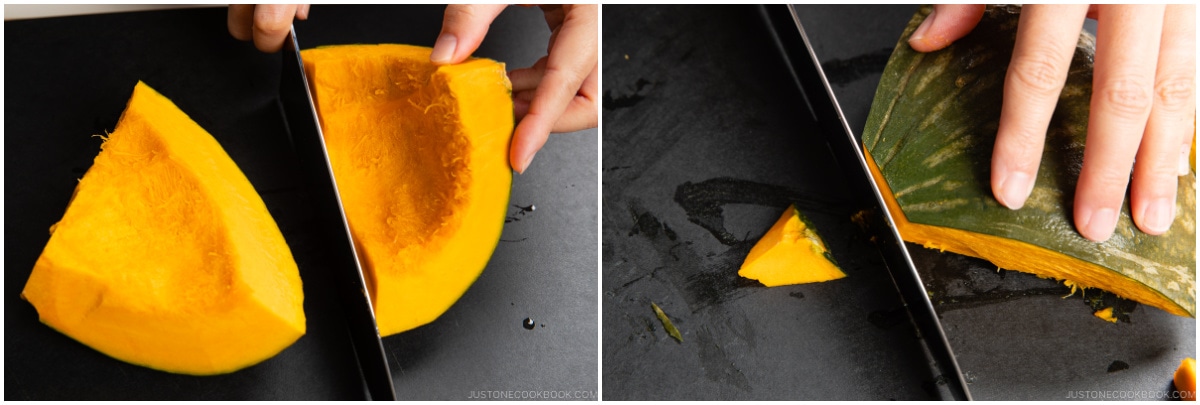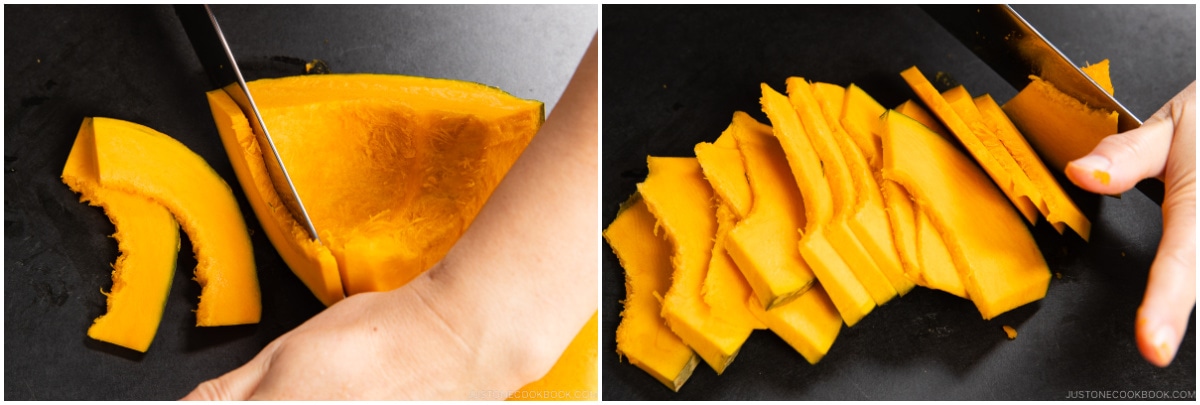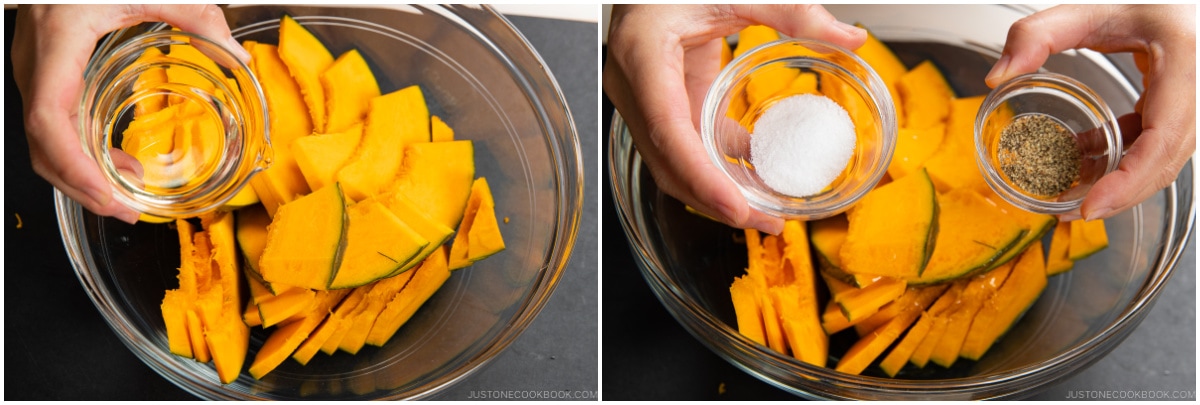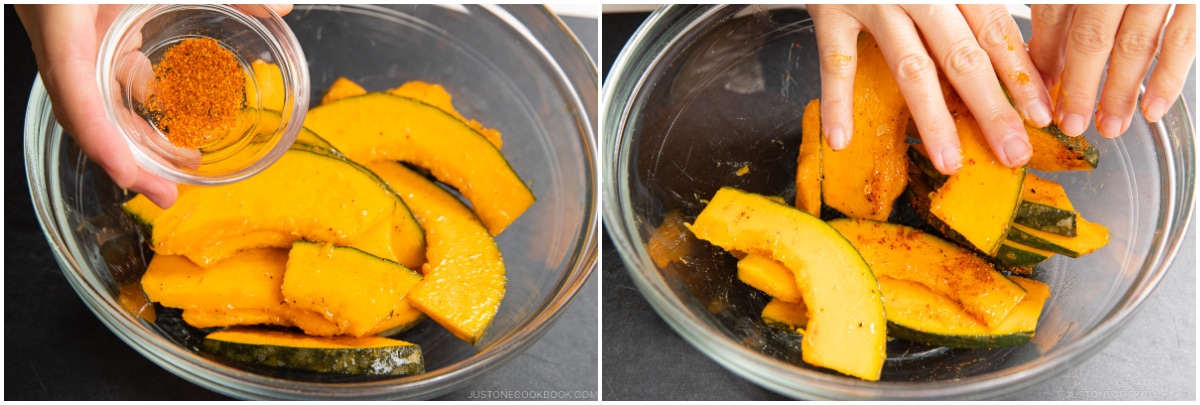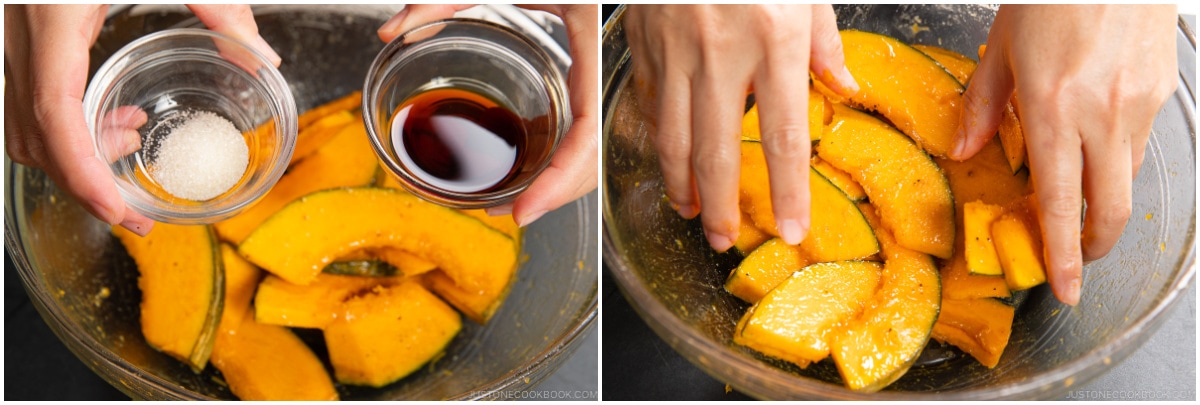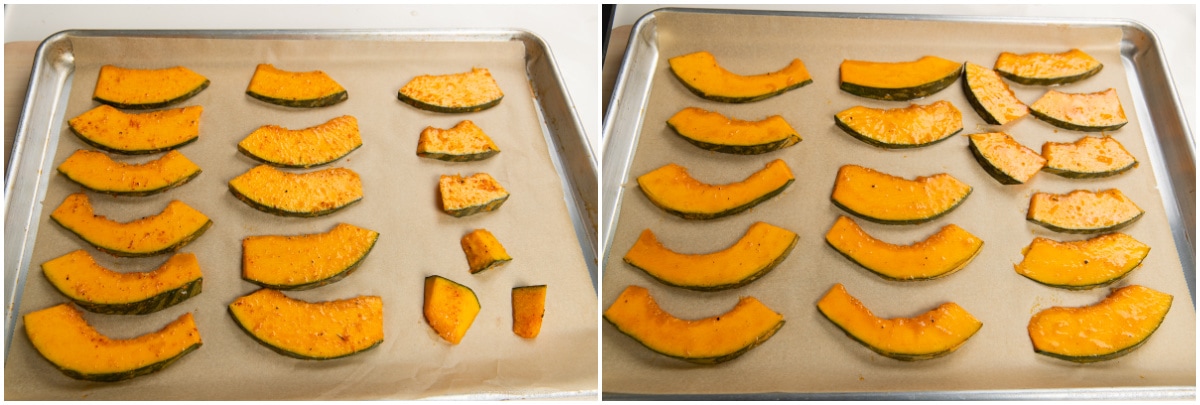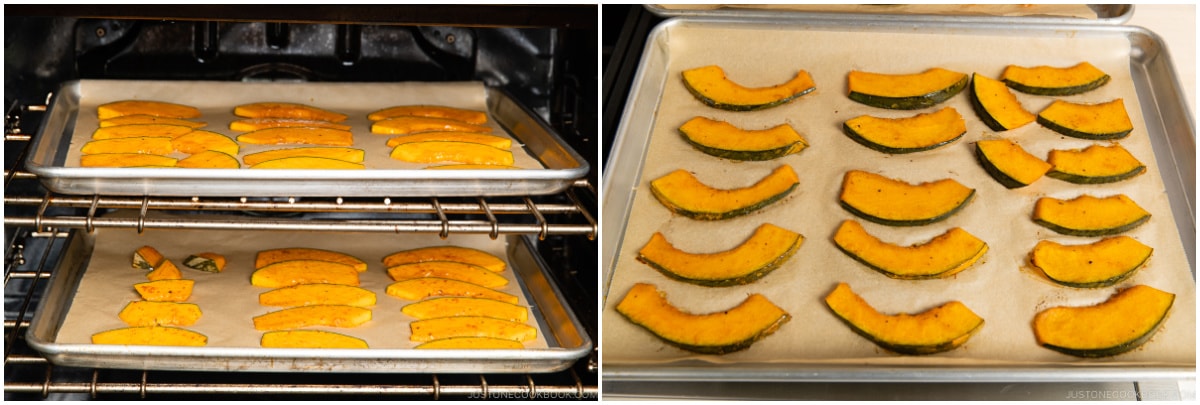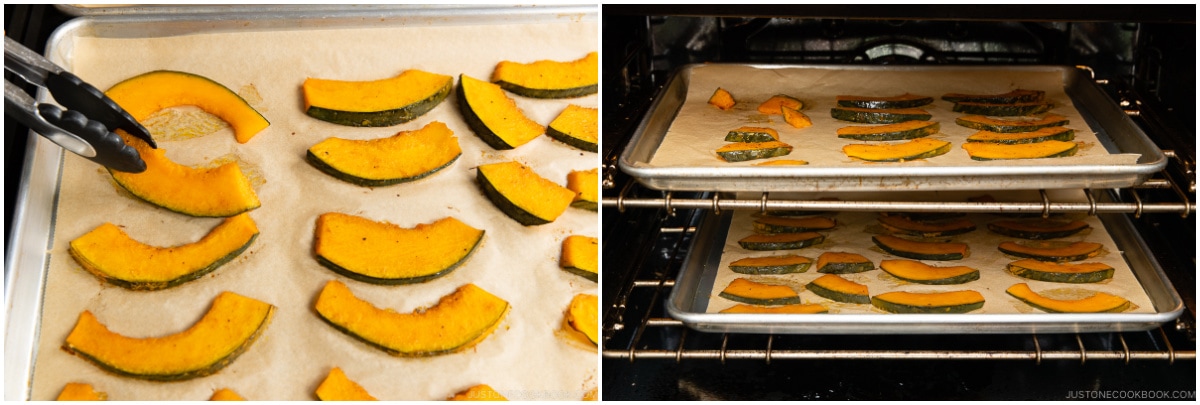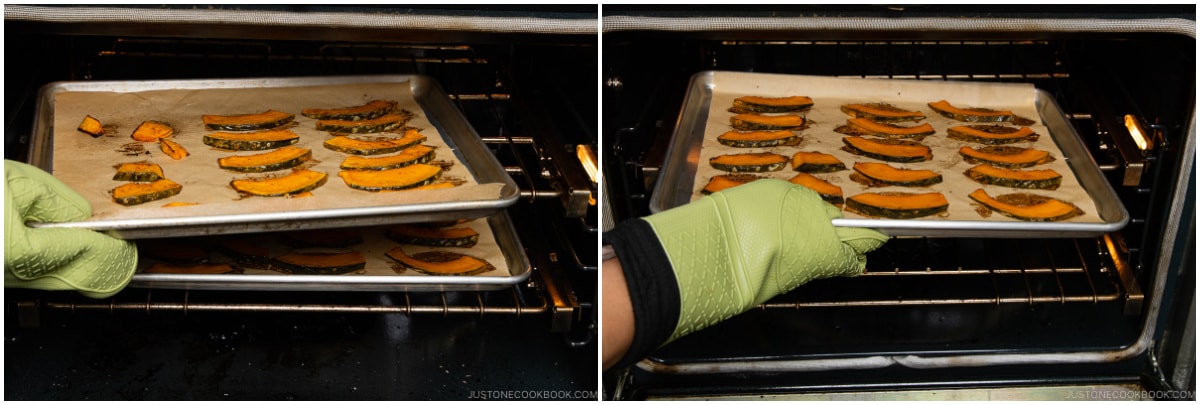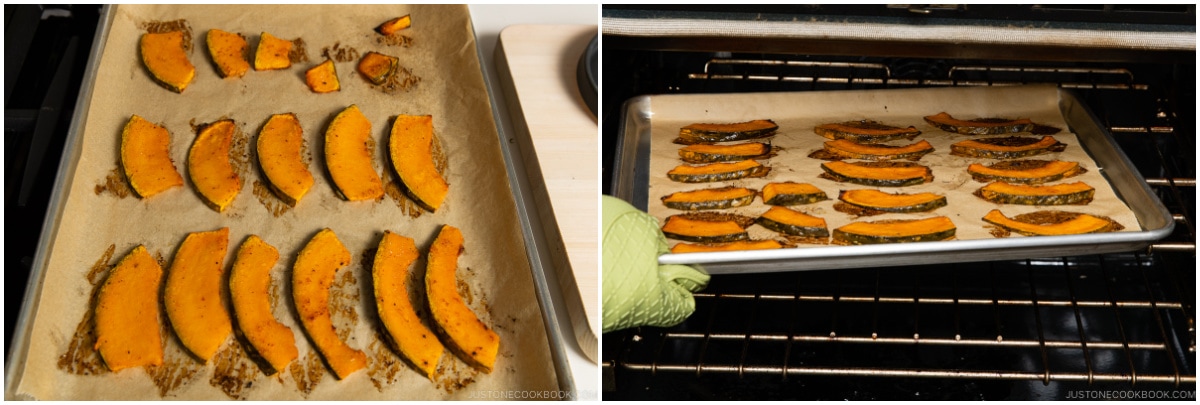Come fall, I’m all about kabocha squash. One of the easiest and delicious ways to enjoy this seasonal gem? Simply roasting it in a hot oven. It roasts up beautifully, with edible crispy skin and an amazing caramelizing buttery texture. With simple Japanese seasonings, it makes the perfect fall dish to treasure. Here’s how to cook roasted kabocha squash!
What is Kabocha Squash?
Kabocha (かぼちゃ, 南瓜), or Japanese pumpkin, is a beloved Japanese winter squash known for its exceptional sweetness, rich flavor, and versatility. It has a tough outer skin, but once cooked, the skin becomes edible and the flesh creamy, fluffy and tender. The flavor will remind you of a hybrid of sweet potato and butternut squash with a hint of roasted chestnut. Kabocha is also highly nutritious, which makes it a great addition to your diet for the season. You can easily find kabocha squash in the US these days—either at farmers markets or mainstream grocery stores. Japanese grocery stores actually carry kabocha year-round! If you’re new to kabocha, learn more about this Japanese squash here.
Popular Japanese Kabocha Recipes
Kabocha has long been a staple of Japanese cuisine, especially during the wintertime. There is a tradition of eating kabocha to stay strong and bring good luck during the winter solstice. So what are the most popular ways to enjoy kabocha in Japan? Here are the top 10 recipes.
Simmered Kabocha Kabocha Tempura Kabocha Pork Stir Fry Kabocha Croquettes Kabocha Gratin Kabocha Soup Kabocha Miso Soup Kabocha Salad Kabocha Flan Kabocha Pie
Were you surprised that roasted kabocha is not on the list? Baking or roasting vegetables in the oven is not a common cooking method in Japan due to the small kitchen space. More people have a countertop oven in their kitchen these days, yet it is still a less common preparation. Since I love roasted vegetables (I know, squash is technically a vegetable) during this time of year, I’ll share how I prepare roasted kabocha for my family.
Japanese Roasted Kabocha – 2 Delicious Flavors!
As with all squashes, roasted kabocha squash is amazing with just salt and pepper, but I love to flavor it with a touch of Japanese flair. All you need:
Shichimi togarashi (Japanese seven spice) – You can find this in Japanese/Asian grocery stores or online. Sweetened soy sauce
As you see, it’s really simple, yet it’s effective to bring out the natural kabocha flavor. Kabocha already has a beautiful flavor on its own, so it’s best to keep the seasonings simple and minimal. The squash itself is sweet enough and there’s no need to sweeten it further with maple syrup. If you have cooked Japanese dishes, you should have Japanese soy sauce already, and maybe shichimi togarashi, too. I hope you give both flavors a try!
How to Cook Japanese Roasted Kabocha
Ingredients You’ll Need
Kabocha Salt Black pepper Oil Flavor 1: Shichimi togarashi (Japanese seven spice) Flavor 2: Soy sauce + a little bit of sugar
Overview: Cooking Steps
Tips to Make the Best Roasted Kabocha
Cut the kabocha into a uniform shape and size (a sharp knife is mandatory). Make sure the kabocha slices have an even thickness and size, as this will help to achieve perfect doneness at the same time. Read this post on how to cut kabocha. Dry the kabocha with a paper towel to remove any excess moisture. It’s important to keep the vegetable dry for roasting, so it roast up nice and crisp. Use your hands and a big bowl to toss the kabocha and coat it with oil. You can also do this on the baking sheet if you’re making one flavor of the roasted kabocha. Kabocha slices should be well-coated with a thin layer of oil. Don’t just drizzle the oil from the bottle and start baking. Roast at 450ºF (230ºC) for 15 minutes, and then broil for 2-3 minutes for deep char. I recommend using a higher baking temperature than the usual 425ºF (218ºC) for roasting vegetables. So you get a nice char and the kabocha doesn’t get too mushy. Rotate the baking sheet halfway through. Don’t forget to switch around the baking sheet if you’re baking two sheets in the oven at the same time. Broil or bake on a higher rack for extra nice char. For crispy edges, switch to a broiler or bake extra few minutes toward the end.
What to Serve Roasted Kabocha with
Miso Chicken Pressure Cooker Oxtail Soup Teriyaki Salmon Smoked Chicken Wings Blistered Shishito Peppers Chrysanthemum Greens and Tofu Salad (Shungiku Shiraae) And of course, as a side to complement your holiday meals such as Thanksgiving or Christmas dinner!
Wish to learn more about Japanese cooking? Sign up for our free newsletter to receive cooking tips & recipe updates! And stay in touch with me on Facebook, Pinterest, YouTube, and Instagram.
